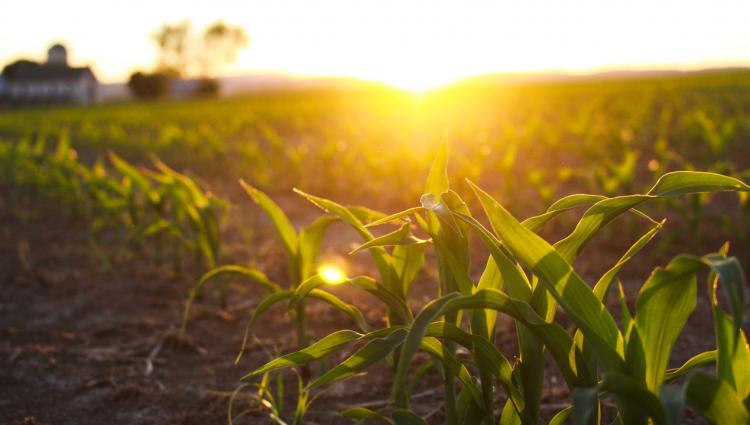The "Big Three" of Tax Planning

The Paycheck Protection Program (PPP), Economic Injury Disaster Loan (EIDL) and Coronavirus Food Assistance Program (CFAP) – you have likely heard about or encountered these programs, and maybe even applied for them, received funds and aren’t sure the tax implications.
First, it’s important to remember that the year isn’t over yet - who knows what will come next? As accountants, we want to help you tax plan as accurately as possible and consider the best available options. The reality is that the details on how these programs will be treated are still unclear. That said, let’s break down what we know and can work with for now, starting easy and working our way to the more complicated.
CFAP is technically a “disaster” payment, similar to crop insurance. For that reason, we question whether it can be deferred for one year like crop insurance. One clear detail points to a “no” answer: only proceeds that are related to damage can be deferred, not proceeds related to price (CFAP is price-based). Since there is no final IRS ruling, the deferment door might remain open for specialty crops that go straight to market at harvest. To be safe, don’t count on deferring CFAP round 1 or the recently announce CFAP 2 payments. Application for CFAP 2 is open through Dec 11, 2020. CPFAP payments are treated like Ag Program Payments that are taxable in the year received, and look out for a 1099 from the USDA/FSA.
EIDL will have a relationship with the PPP if your PPP loan is forgiven. Loan proceeds are not recognized as income, and principal repayment is not an expense. Part of the EIDL program included an “advance,” or a grant that does not require any repayment. A number of folks decided take the grant and forget about the additionally approved loan funds (which are not income, to clarify). By itself, without any PPP loan funds in the picture, the “advance” EIDL funds received will be considered taxable income.
If PPP is in the picture and loan forgiveness is granted (most recipients aren’t at that point yet), the “advance” portion of the EIDL program will count against your loan forgiveness amount (think of it as not being able to double dip on free money). The issue then shifts to the taxable treatment of the PPP forgiveness amount. For example: You received $10,000 in EIDL advance funds (no repayment required) and $100,000 in PPP loan funds. When you apply for PPP loan forgiveness, the most forgiveness you are eligible for is $90,000. The remaining $10,000 stays as a PPP loan. There are two parts to dealing with EIDL “advance” funds: they are taxable income and they will lower your PPP loan forgiveness dollar for dollar.
Congress passed the CARES Act with clear intent that PPP loan forgiveness would be excluded from gross income for the recipient. What was not addressed in the CARES Act was whether payroll and other expenses covered by PPP funds would follow Internal Revenue Code (Code) or not. To summarize Code as plainly as possible, if you are not going to claim the income (forgiven debt), you can’t claim the associated deductions. At this writing, without action from Congress, you can’t claim your payroll expenses up to the amount that your PPP loan is forgiven.
This is a challenge for accountants because we want to make sure your gross wages expense on your tax return matches your W3 Wage Transmittal (the form that summarizes all your W2s for the Social Security Administration). With a longer period allowed (up to 24 weeks) to use the PPP funds, it makes sense to wait until early 2021 to apply for PPP forgiveness and use those 2020 payroll forms to further document the forgiveness application. The big question is whether we can use this inconsistency between Code and the intent of the CARES Act to benefit us in tax savings by (1) maintaining/carrying the PPP loan into 2021, (2) claiming all the payroll/other eligible expenses for 2020 and (3) applying for debt forgiveness in 2021 and showing that income in 2021.
Potentially, there is room for interpretation. It is similar to the strategy many farmers use of prepaying next year’s crop inputs in December, but not selling last year’s crop until March. There are many pieces to consider around the timing of PPP loan forgiveness, and everyone’s situation is unique. You should seek guidance from a tax professional on when to file your PPP loan forgiveness application and stay tuned for any post-election changes from Congress before year-end.
Does your head hurt yet? There are many variables here with different sources of funds in 2020 that are new to businesses and farms. On top of that, how they are treated (income or non-income) depends on even more variables. These “Big Three” are the obvious to consider during tax planning this year with your accountant, but how they work together with the other moving pieces of your business or farm is just as important to understand. While 2020 has had enough surprises already, you don’t have to let your tax situation be another.